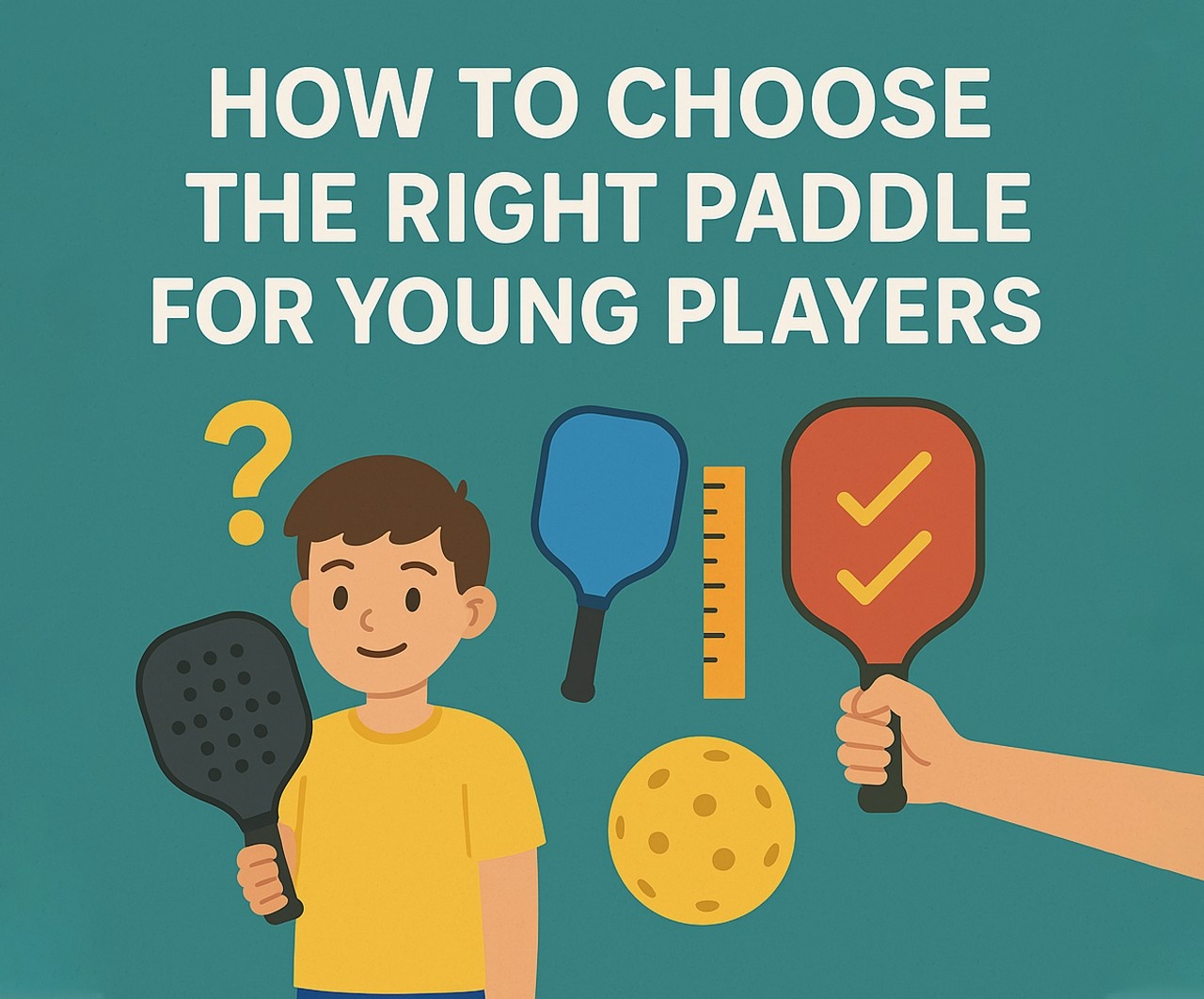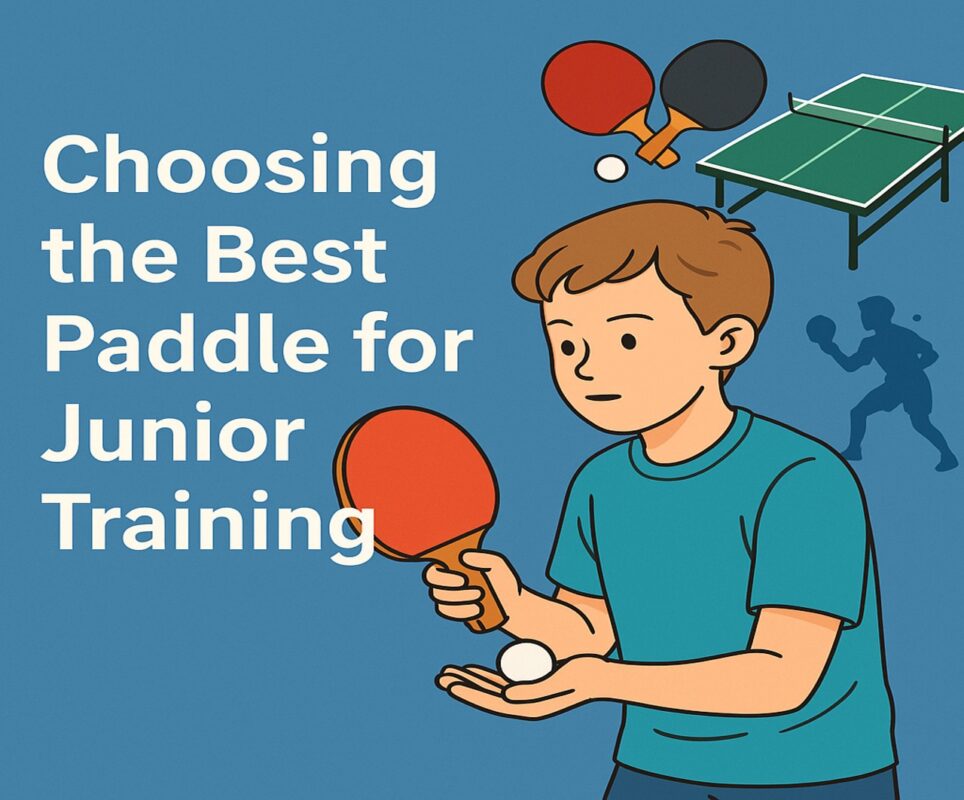Choosing the right paddle for young players can make a significant difference in their learning experience, skill development, and overall enjoyment of the game. A well-chosen paddle not only supports proper technique but also boosts a child’s confidence and motivation on the court. Whether a child is just starting out with casual games or already showing promise as a budding competitor, selecting a paddle that fits their unique needs is essential. Comfort, weight, grip size, and paddle material all play important roles in determining how well a young player connects with the game.
For beginners, it’s often best to start with a lightweight paddle that offers a larger sweet spot to help with control and consistency. As their skills progress, players may need paddles that allow for more power and precision. Parents and coaches often face the challenge of balancing all these factors—control, power, durability, and comfort—while also considering budget and player preferences. With so many paddle types and features available, the decision-making process can quickly become overwhelming.
This guide aims to simplify that process by highlighting what to look for in the right paddle, including design preferences that young players often love, like a yellow pickleball paddle for its bright, energetic appearance or a pink pickleball paddle for a bold, personalized touch. For players who are progressing toward competitive play, a pickleball paddle pro model can offer enhanced performance features such as better spin control and a more responsive core. These advanced paddles are designed to grow with the player, helping them fine-tune their game over time.
To create a well-rounded playing experience, it’s also important to pair the paddle with high-quality accessories, such as Packgout Pickleball Balls. These balls are known for their consistent bounce, reliable flight, and durability, making them a perfect match for young players who are learning the game’s nuances. Using the right ball alongside the right paddle ensures a smoother, more enjoyable introduction to the sport.
Ultimately, selecting the right paddle is more than just a one-time purchase—it’s an investment in a child’s development and enthusiasm for pickleball. A paddle that feels good in hand, offers appropriate feedback, and matches the player’s ability level can keep young athletes engaged, motivated, and most importantly, having fun on the court. With thoughtful consideration and the right gear, young players can unlock their potential and develop a lifelong love for the game. Know more..
Why Choosing the Right Paddle Matters
Young players often develop their skills based on the equipment they use. A well-suited paddle ensures that they can control the ball effectively, improve their technique, and avoid injuries. The wrong paddle can lead to frustration and slow progress. Here are the key factors to consider:
1. Weight and Size
A paddle that is too heavy can strain young players’ arms, while one that is too light may lack control. Most young players benefit from paddles that weigh between 6.5 to 7.5 ounces. Lightweight paddles provide better maneuverability, helping them react faster and refine their technique. Additionally, a paddle that is appropriately sized for the player’s height and arm length allows for better performance and consistency. Ensuring the paddle is not too long or too wide helps avoid unnecessary discomfort.
2. Grip Size
A paddle with the wrong grip size can lead to discomfort or even injury. Young players typically require smaller grip sizes to maintain proper control. A grip size between 3.5 to 4 inches is ideal for most children. Make sure the grip feels comfortable and allows for a firm hold. If the grip is too large, it may cause strain on the wrist, while a grip that is too small may lead to instability. Testing different grip sizes can help find the perfect fit.
3. Paddle Material
Paddle materials affect performance and durability. Here’s a breakdown of the most common materials:
- Graphite Paddles: Lightweight and provide great control, making them perfect for young beginners.
- Composite Paddles: Offer a balance of power and control, suitable for intermediate players.
- Wood Paddles: Durable and inexpensive, but often too heavy for young players.
Best Options for Young Players
1. Yellow Pickleball Paddle
A yellow pickleball paddle is not just visually appealing but also helps young players stay engaged. Brightly colored paddles can make it easier to follow the ball and enhance reaction times. Look for paddles with a lightweight graphite or composite build that maintains durability while offering excellent control. Yellow paddles are also highly visible, making them a great choice for outdoor play where visibility is key. A paddle that combines a fun design with high performance can keep young players motivated.
2. Pink Pickleball
A pink pickleball adds a fun and playful element to the game, keeping young players motivated. These paddles are often available in kid-friendly designs and sizes, ensuring that children feel excited to play. When paired with a lightweight paddle, it helps build confidence and makes learning more enjoyable. Pink paddles often feature creative patterns or themed designs that appeal to younger players. Additionally, the vibrant color can make it easier for children to spot the paddle and the ball, improving their focus and reaction time.
3. Pickleball Paddle Pro for Young Athletes
For young players looking to step up their game, a pickleball paddle pro model can provide the advanced features they need. These paddles offer superior control, power, and durability. They are typically designed with high-quality graphite or composite materials that deliver consistent performance for those eager to improve their skills. Pro-level paddles often feature specialized cores that enhance responsiveness, making them ideal for competitive young players looking to refine their game.
Key Features to Look For
1. Control vs. Power
Younger players often benefit from paddles that prioritize control over power. A lightweight paddle with a large sweet spot allows for easier ball control and helps build confidence. As they develop, a more balanced paddle that adds a bit of power may be suitable. Advanced young players may gradually transition to paddles that offer a blend of power and precision, allowing them to adapt their gameplay as they grow.
2. Edge Guard Protection
Paddles with edge guards help prevent damage during accidental drops or when scraping the ground. This feature extends the paddle’s lifespan and keeps it in top condition for longer. Edge guards also protect against wear and tear, ensuring that the paddle remains effective and safe for prolonged use.
3. Surface Texture
A paddle with a textured surface provides better spin and ball control. For young players learning different shots, this feature can be an advantage as they refine their technique. Textured surfaces also help enhance grip on the ball, allowing players to experiment with spin and angles, fostering skill development at an early stage.
Why Packgout Pickleball Balls Enhance Performance
Pairing the right paddle with quality balls is essential for a complete experience. Packgout Pickleball Balls are known for their durability and consistent bounce, making them an excellent choice for young players. These balls perform well on both indoor and outdoor surfaces, allowing children to practice in different settings and improve their overall game. Using high-quality balls ensures that young players receive consistent feedback during practice, helping them develop better accuracy and technique.
Benefits of Packgout Pickleball Balls
- Durable construction for long-lasting use
- Consistent bounce for better control
- Ideal for both indoor and outdoor courts
Additional Accessories to Enhance Play
1. Pickleball Bags
Investing in a quality pickleball bag helps young players stay organized and protect their equipment. Bags with multiple compartments allow them to store paddles, balls, and other essentials securely. Look for lightweight, easy-to-carry bags that accommodate their needs.
2. Protective Eyewear
Safety is crucial, especially for young players. Protective eyewear can prevent accidental injuries and protect their eyes from fast-moving balls. Encourage young players to wear safety glasses during practice and matches.
3. Court Shoes
Proper footwear is often overlooked but plays a significant role in enhancing performance. Court shoes designed for pickleball provide better grip and stability, reducing the risk of slips and falls. Look for shoes that offer cushioning and ankle support to keep young players comfortable and protected.
Tips for Maintaining Paddles and Balls
1. Clean the Paddle Regularly
Dust and dirt can affect paddle performance. Wipe down the paddle with a damp cloth after every use to maintain its surface quality. For paddles with textured surfaces, gently clean the surface to avoid removing the texture that aids in ball control.
2. Store Properly
Store paddles and balls in a cool, dry place to prevent warping or damage. Avoid exposing them to extreme temperatures. Paddles left in hot or humid environments may lose their integrity over time, impacting performance.
3. Inspect for Wear and Tear
Regularly check for signs of damage, especially around the paddle’s edges. Replacing a worn-out paddle ensures young players continue to perform at their best. Inspecting grips for wear can also help maintain comfort and control.
Mistakes to Avoid When Buying a Paddle
1. Choosing Based Solely on Price
While affordability is important, investing in a quality paddle that suits the player’s needs is more beneficial in the long run. Low-cost paddles may lack the durability or control necessary for young players. Spending a little extra on a reliable paddle ensures that the child gets the best possible experience.
2. Ignoring Grip Size
A paddle that doesn’t fit the player’s hand can lead to poor control and discomfort. Always ensure the grip size is appropriate for the child’s hand. Testing grip sizes before purchase helps find the right balance between comfort and performance.
3. Overlooking Paddle Weight
Weight directly impacts maneuverability. Heavy paddles can slow down a young player’s reaction time, while ultra-light paddles may sacrifice power. Choose a paddle that offers a balance between control and power to help the player develop their skills.
Conclusion
Choosing the right paddle for young players requires a balance between comfort, control, and durability. Whether you’re considering a yellow pickleball paddle, a pink pickleball, or a more advanced pickleball paddle pro option, ensuring that the paddle matches the child’s skill level and comfort is crucial. Pairing the paddle with Packgout Pickleball Balls further enhances the playing experience by providing consistent performance. By following these guidelines, young players can develop their skills, enjoy the game, and stay motivated to improve.
Encourage young athletes to practice regularly, experiment with different paddles, and most importantly, have fun on the court! Investing time in choosing the right equipment will pave the way for a positive and rewarding pickleball journey.


